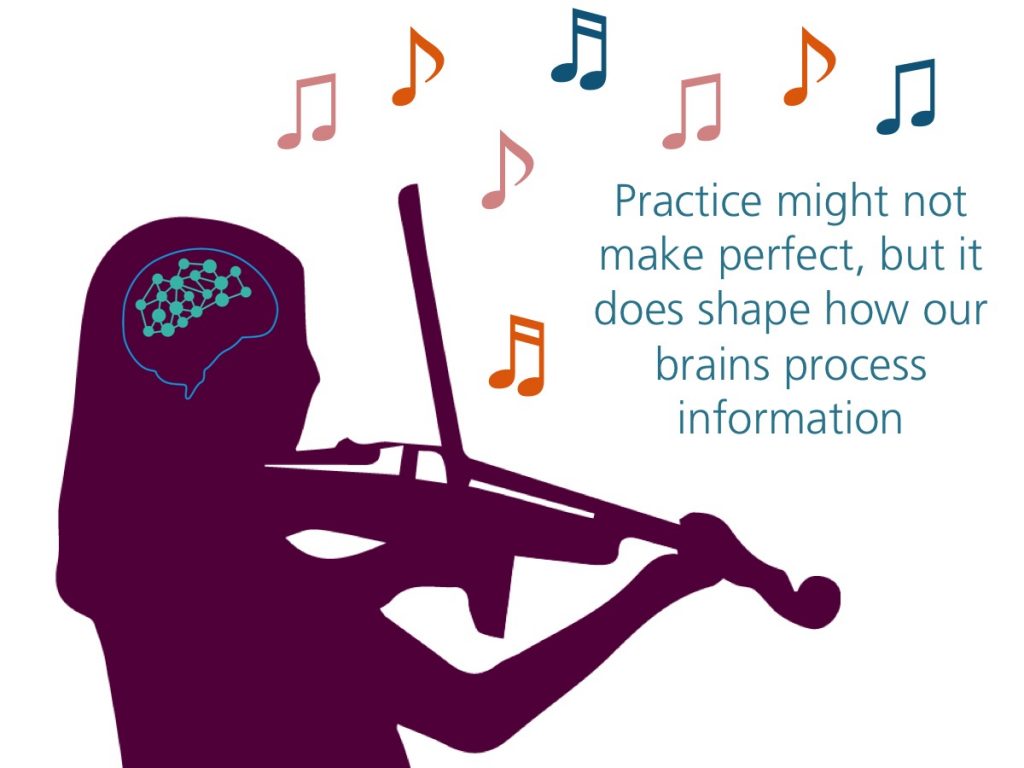
This is an example of how the experiences we have shape the way our brains process information. The more often we do something, like practice an instrument, the stronger our brain responses tend to be. Practice might not make perfect, but it does shape how our brains process information. At a microscopic level, it even changes how neurons in our brains are connected to each other. This ability to change the microstructure of our brains is called neuroplasticity. Neuroplasticity is what allows us to learn new things throughout our lives.
-
- Beat
- the regular pulse of music
- Electroencephalography (EEG)
- a non-invasive method used to measure electrical activity in the brain
- Executive function
- a set of mental abilities that help us focus attention, remember information, and switch between tasks
- Magnetoencephalography (MEG)
- a non-invasive brain imaging technique used to determine which regions of the brain are active
- Meter
- a grouping of beats with specific patterns
- Neuroplasticity
- the ability to change how neurons in our brain are connected to each other
- Pitch
- the measure of how high or low we perceive sounds to be
- Pro-social behavior
- actions that are intended to help others
- Synchronized movement
- movements that occur in sync with musical beats and, or with other people
- Timbre
- the quality of a musical sound or voice that allows us to tell the differences between instruments or voices